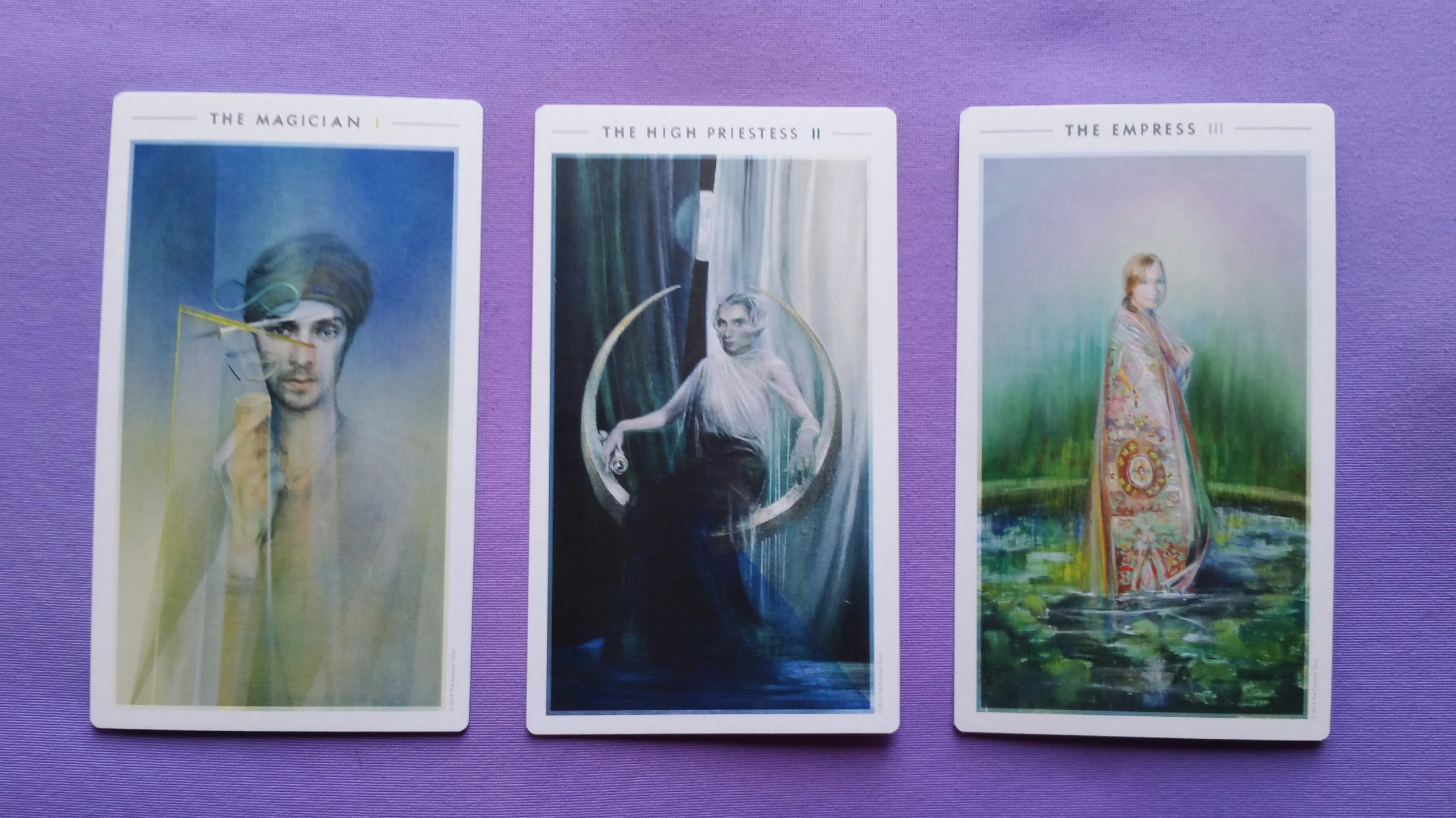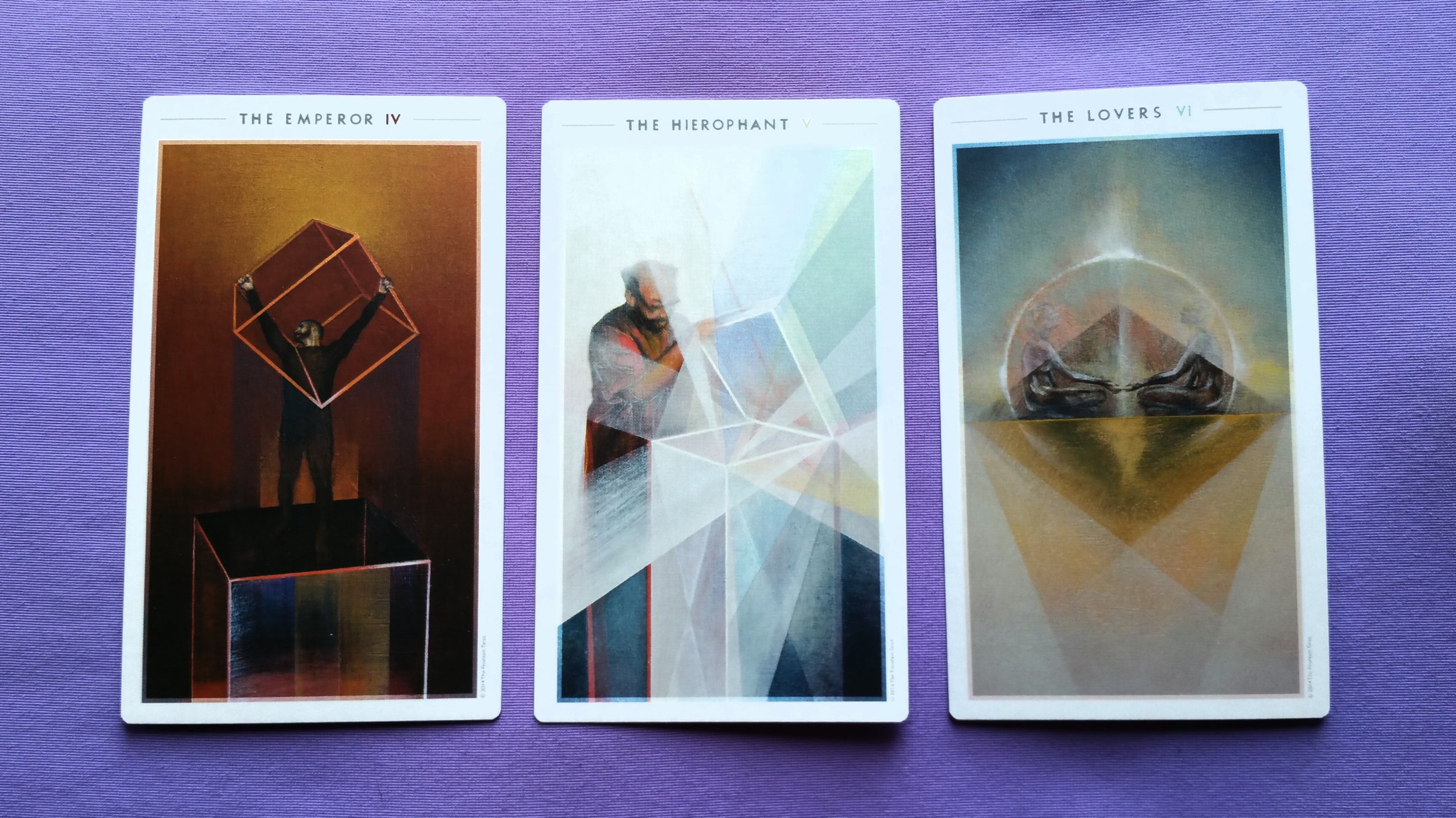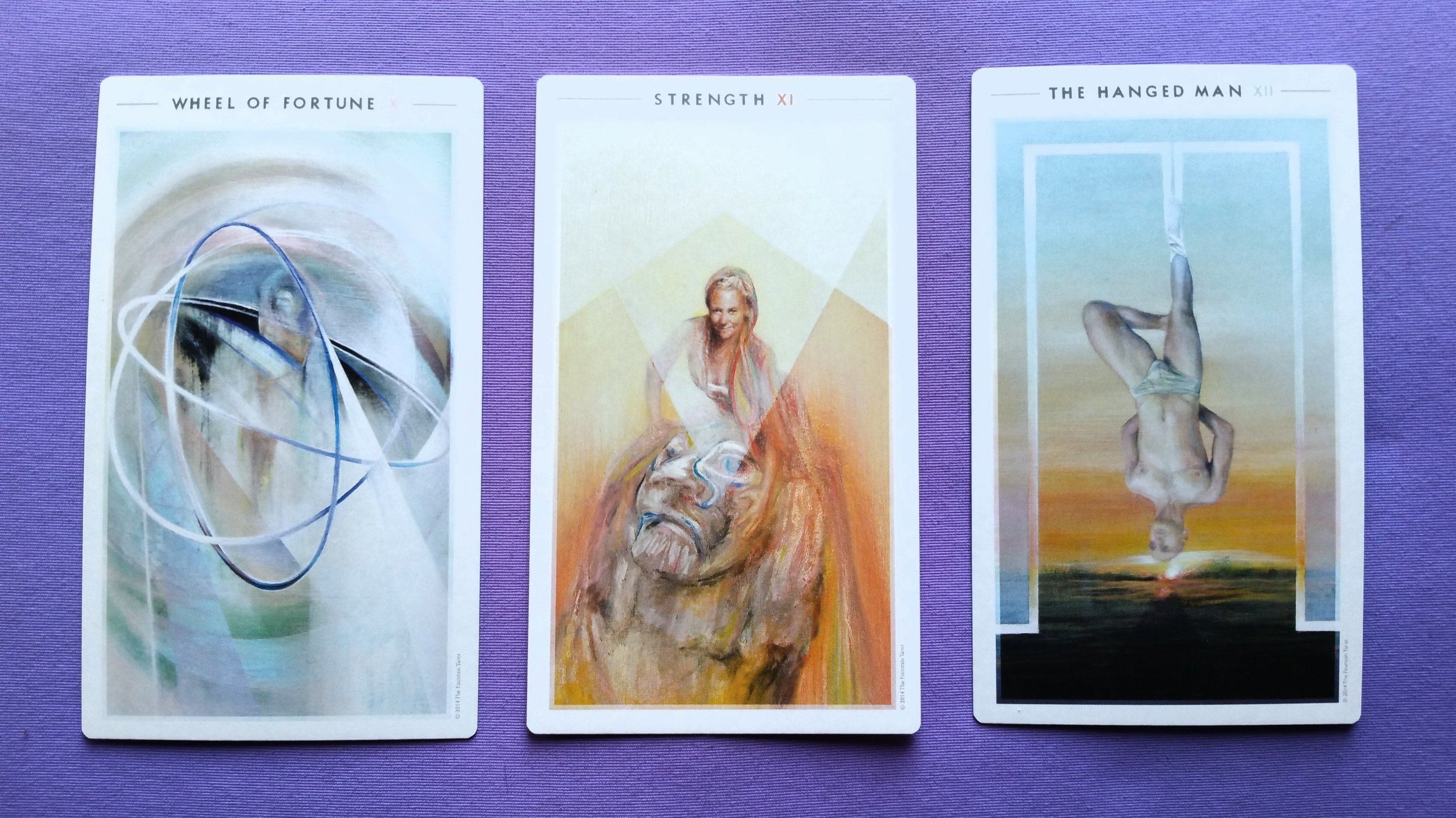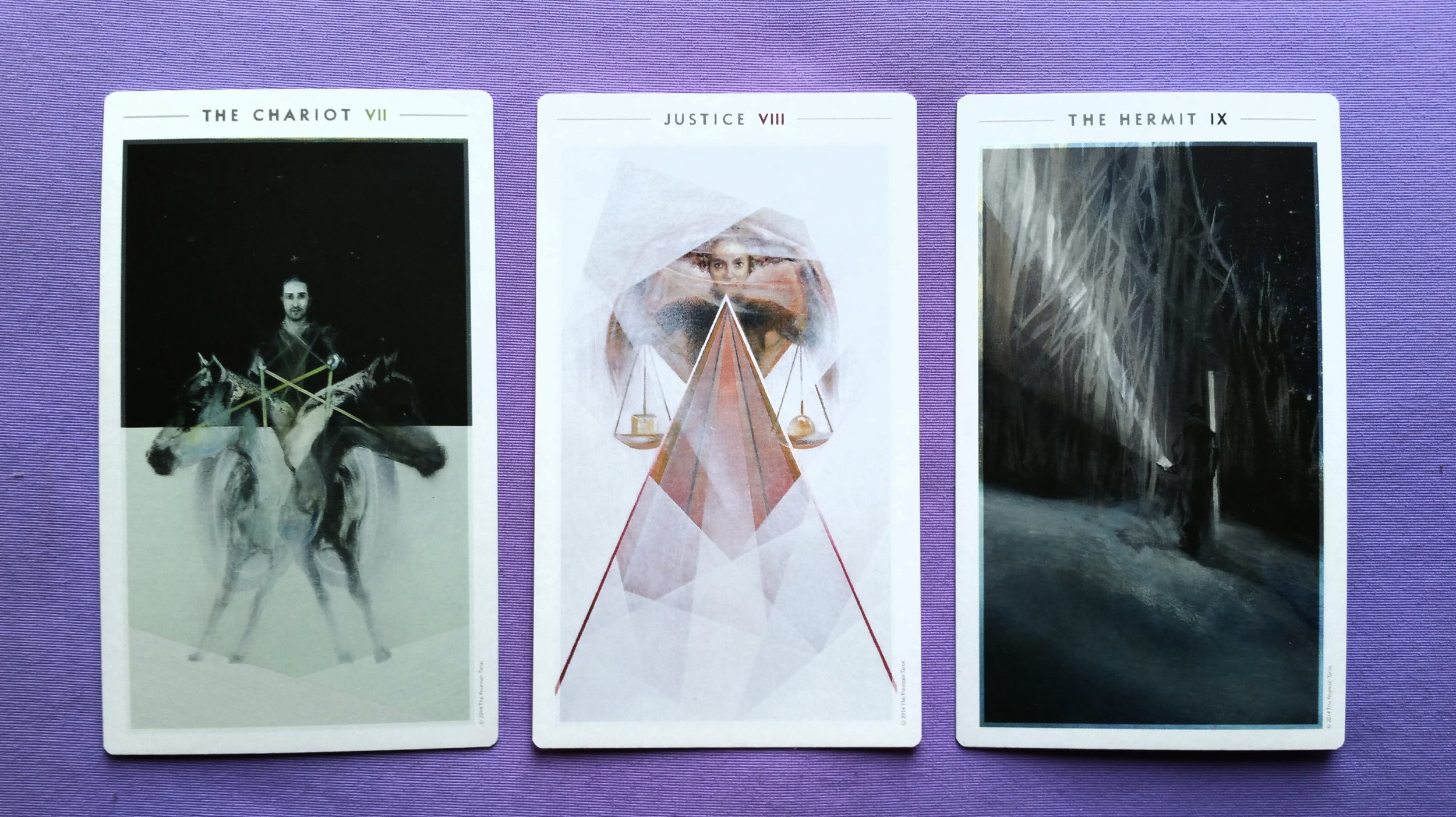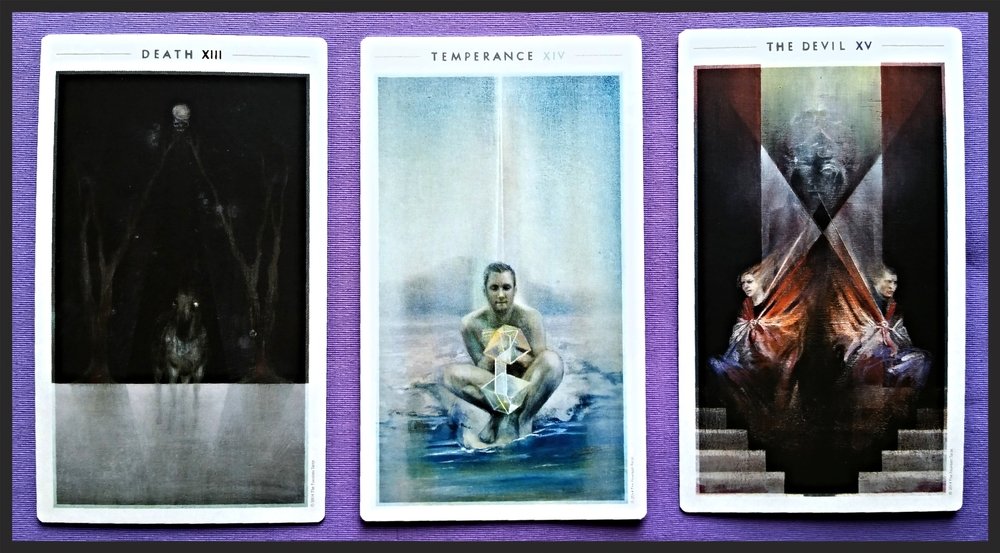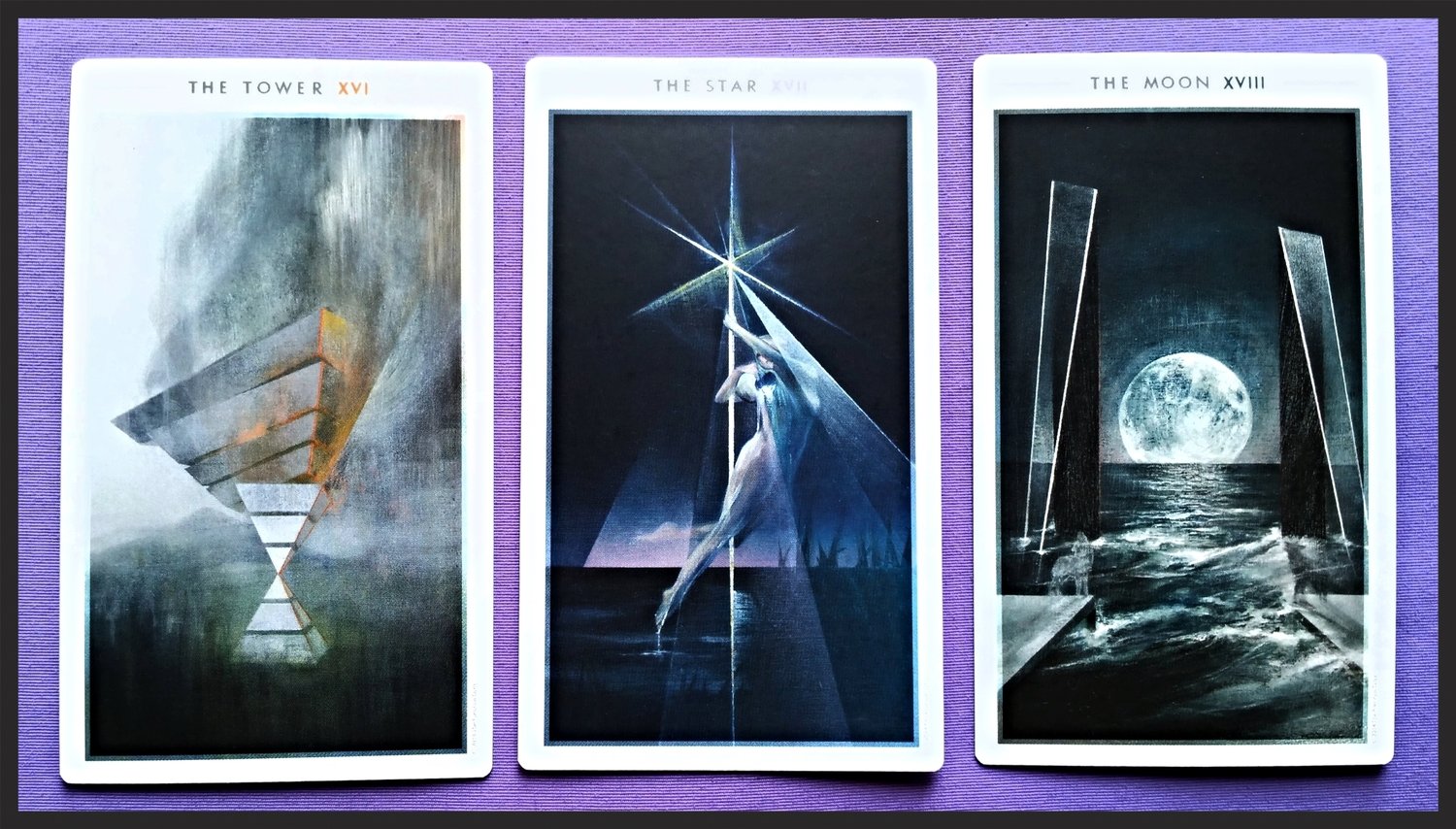The Fountain Tarot
While I am typically more attracted to Renaissance or Medieval type decks, my curiosity was very much piqued by The Fountain Tarot. Initially, this may have been owed to the beautiful and well-put-together packaging. Admittedly I'm a sucker for clever little boxes. But The Fountain Tarot is more than a pretty, shiny deck, wrapped in handsome packaging. It is filled with subtle and compelling symbolism, which beckons to be explored.
First of all, the box that comes with the deck is damn sexy! Glossy with a sort of grunge look to it. This and the title and logo shimmer with rainbow colors in the light. And I do love pretty, shiny things. It also opens and gently snaps shut magnetically. Neat!
The booklet that fits inside the box is more than your average, generic tarot booklet. This one, for its size, is full of insight and a fresh perspective. Jason Gruhl did a wonderful job with this companion booklet. It is thoughtful, well written, and definitely worth reading.
The tarot back design is contemporary in style. The colors and shapes are symmetrical and well-balanced, complimenting the rest of the deck perfectly. This isn't always the case with a lot of decks out there. In fact, I have a couple of decks I find myself not wanting to use, simply because I have an aversion to the back of the cards. Sounds silly, but it's true. It seems Andi Todaro made a point of designing something that captured the essence of the deck.
The deck size is pretty much standard, with beautiful silver gilded edges, and a lovely matte finish. The card stock is more sturdy than flexible. It almost begs to be shuffled, played with, and broken in, which I have every intention of doing. As it is, I have only shuffled the cards a couple of times and already the silver gilt is starting to come off.
There is nothing convoluted about The Fountain Tarot. Its style is modern, minimalistic, and seemingly simple. Seemingly, because the more you look at the cards, the more you see. Filled with layers of complexity and echos of occult teachings, I had no problem recognizing the traditional tarot meanings in this deck. And while this deck has its own way of expressing itself, the creators were not self-indulgent in their depictions. Unlike so many (too many) decks on the market today, this deck was very much thought out. They did an amazing job combining different perspectives from various tarot systems.
The Fountain Tarot comes with an additional card called The Fountain. Instead of a number, it has the lemniscate symbol, known as the infinity sign. With one or two exceptions I typically omit the extra card entirely, however in this instance, I see the wisdom of it, it makes sense to me, and it will be included in my readings.
The Fountain card goes beyond the mundane but offers insight regarding everyday situations and challenges. It speaks of clarity, possibilities, and the wisdom that comes from being quiet and listening to the self. I like that its meaning is open to personal interpretation. I would very much like to know what my fellow readers have to say about it.
I've only done a couple of personal readings so far but found the deck extremely straightforward and easy to understand. The imagery is fluid and easy on the eyes. Jonathan Saiz leaves a lot of room for personal and intuitive interpretation. I will have no problem reading with this deck professionally. And I very much look forward to sharing the deck with my students, as I feel this deck would be a good choice for beginners.
Getting acquainted with a new tarot deck is very much like going on a personal journey, one I have only just embarked on with The Fountain Tarot, but very much look forward to exploring further in the future. And while it isn't a favorite just yet, I certainly do like it...quite a lot.
For more information about The Fountain Tarot and its creators please visit their website at www.fountaintarot.com or you can purchase it on Amazon.



